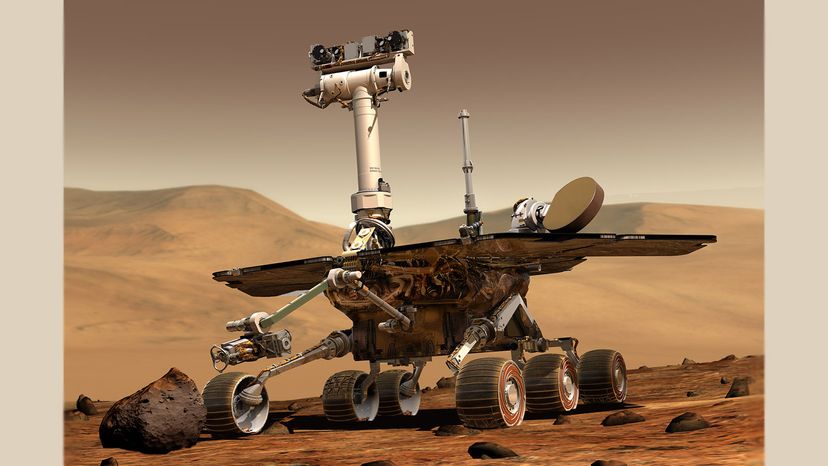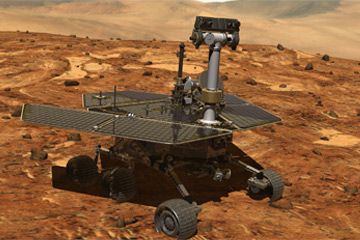
Back on Jan. 24, 2004, NASA's Opportunity rover descended to the Martian surface and survived a bouncy landing in the Meridiani Planum region, to the relief of scientists anxiously monitoring the space probe back at the Jet Propulsion Laboratory in Pasadena, California. ("All right, we're on Mars!" one researcher exclaimed exultantly, according to a CNN account.)
The $400 million rover, one of a pair that NASA landed upon the Red Planet that year, was designed to last for just a few months on the rough, dusty terrain of the Martian surface. Instead, to the astonishment of researchers, it lasted for nearly 15 years in Earth time, the longest time that any robot from Earth has operated on another planet, until it finally stopped communicating with Earth after a severe Martian dust storm in June 2018.
Advertisement
After unsuccessful attempts to restore contact, NASA officials on Feb. 13, 2019 finally gave up and declared that Opportunity's mission finally was over. The exact cause of the probe's demise is unclear. It could be that its solar panels went dead under a chokingly thick layer of Martian dust, or that its electronics failed due to the extremes of Martian weather.
Opportunity had outlived its robotic twin, the Spirit rover, by nearly eight years. Its final resting place was the aptly-named Perseverance Valley. Here are some images that Opportunity took from the ground-level there last January.
During its astonishing lifespan, the golf-cart-sized, 384-pound (174 kilograms) $400 million planetary probe managed to cover 28 miles (25 kilometers), 44 times the distance that scientists had designed it to cover and set a single-day Martian driving record of 721 feet (220 meters) on March 20, 2005. During its travels, it accomplished plenty of other amazing feats. Here are a few of them:
- It took a whole lot of pictures. The probe snapped 217,000 images of the Martian surface, including 15, 360-degree panoramas such as this one. Those images were more than just pretty pictures. Images from its panoramic camera, equipped with 13 different color filters, gave scientists the opportunity to enhance the wavelengths and study changes in the features of Martian rock formations. You can peruse a library of Opportunity's images on NASA's website.
- It discovered the Martian "blueberries." Just a few months after arriving on Mars, the probe discovered tiny globules rich in hematite, which scientists dubbed blueberries because of their shape and color. The blueberries weren't just curiosities. They provided evidence that ancient Mars had a watery environment.
- It found more signs of ancient water — and possibly, ancient life — on Mars. At the Endeavor crater, Opportunity found clay minerals that were formed in flowing neutral-pH water in the distant past. As this Space.com article details, the discovery raises the possibility that the environment around the crater may have been able to support microbial life millions of years ago.
- It studied a whole lot of Martian rock samples. Opportunity's tools exposed the surfaces of 52 Martian rocks to reveal fresh mineral surfaces for analysis, and cleared 72 more rocks with a brush so that their surfaces could be investigated by its instruments.
- It was one heck of a climber. Opportunity proved to be a remarkably nimble robot, scaling gravel slopes as steep as 32 degrees, an off-Earth record, according to NASA.
- It explored a whole lot of craters. In the course of its travels, Opportunity studied more than 100 impact craters of various sizes, and gathered insights about how craters form and erode over time.
- It learned a lot about the Martian environment. Opportunity studied Martian clouds and the opacity of the Martian atmosphere, including how it effects solar panels on space probes. That information may help scientists to design even more rugged, resilient rovers in the future. The rover's instruments also tracked changes in Martian clouds as they accumulated, providing scientists with the opportunity to study Martian weather.
So, hat's off to you, Oppy. You were the best little rover ever. RIP.
Advertisement

